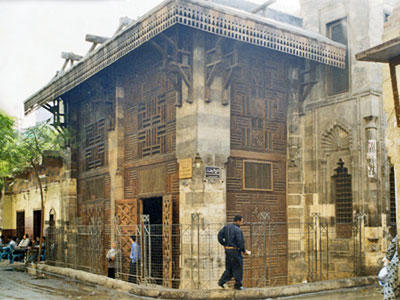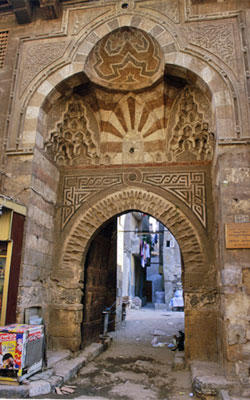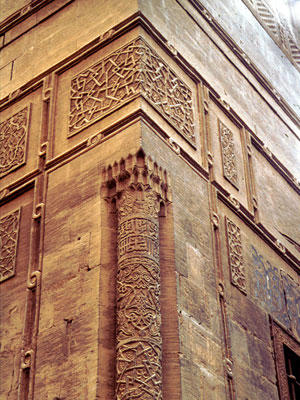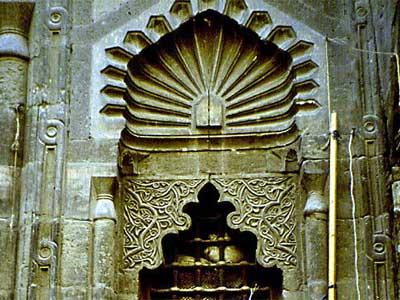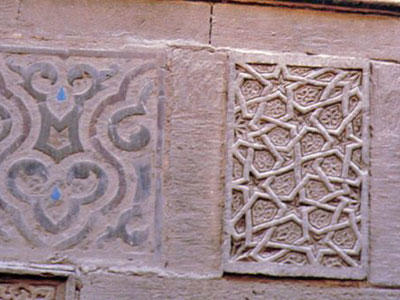Mamluk sultan Qa’itbay’s fountain-school complex was constructed in 1477 in central Cairo. It includes a two-story sebil (public fountain house) at the northern corner with a kuttab (boy’s Koranic school) above. While the structure has been continuously occupied and used for to its original function since its construction, lack of maintenance left the building’s important architectural elements—marble floors, wooden ceilings, decorated exterior masonry—in a severe state of degradation. Structural components like the main staircase and the ceiling of the ground floor came near to collapse once government finances stopped supporting the site in the 1960s. It suffered serious structural cracks after an earthquake in 1992.
1996 and 2000 World Monuments Watch
WMF secured funding from American Express to assist conservation efforts at the sebil. Important components of the project were the creation of a maintenance plan and the establishment of a tourist information office at the site for the old city of Cairo. Initial work included surveying the site. Following that, conservation work began. Stones that had been damaged by environmental pollutants were cleaned. When necessary, walls were disassembled and rebuilt to correct structural problems. New plaster was added throughout the complex, as were new roofs and a new lighting system. The conservation program succeeded in addressing negative environmental impacts, improving structural conditions, and restoring damaged architectural elements. Plans were created to use the building for community gatherings in addition to a tourist information center.Sultan Qa’itbay’s fountain-school remains one of the best-preserved and most finely decorated complexes of its type in Cairo. It is representative of the unique blending of urbanity and public service that characterized monumental structures built during the Mamluk period. The exterior walls exhibit finely tooled carving, and the interior gilded ornamental ceilings and wooden girders gleam.

